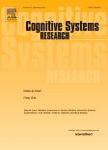版权所有:内蒙古大学图书馆 技术提供:维普资讯• 智图
内蒙古自治区呼和浩特市赛罕区大学西街235号 邮编: 010021

作者机构:Harbin Engn Univ Coll Shipbldg Engn Harbin 150001 Heilongjiang Peoples R China Harbin Engn Univ Coll Comp Sci & Technol Harbin 150001 Heilongjiang Peoples R China
出 版 物:《COGNITIVE SYSTEMS RESEARCH》 (Cogn. Sys. Res.)
年 卷 期:2018年第52卷
页 面:828-842页
核心收录:
学科分类:0402[教育学-心理学(可授教育学、理学学位)] 04[教育学] 1001[医学-基础医学(可授医学、理学学位)] 0812[工学-计算机科学与技术(可授工学、理学学位)]
主 题:Vector field visualization Line integral convolution Texture enhancement Color enhancement
摘 要:In order to reflect the internal motion characteristics of entire vector fields, texture visualization methods based on line integral convolution are usually adopted. However, the visualization results obtained in this way have low image quality. To solve this problem, this paper suggests using line integral convolution to optimize two specific aspects - texture enhancement and color enhancement - to provide an enhanced vector field visualization model. Existing texture enhancement algorithms can create texture aliasing. Based on an analysis of the relationship between vector angles, sampling distance and texture aliasing, the paper puts forward a texture enhancement algorithm that uses the vector angle to adjust the sampling distance of a high-pass filter. This greatly reduces the presence of texture aliasing. For color enhancement, a linear algorithm is usually used that adds vector size information to the vector field. However, the resulting image has a problem of color concentration. In view of this, the distribution characteristics of the vector field are analyzed using a histogram and a dynamic nonlinear color enhancement algorithm is proposed. This noticeably improves the color distribution of the resulting image and improves the overall visual quality of the result.